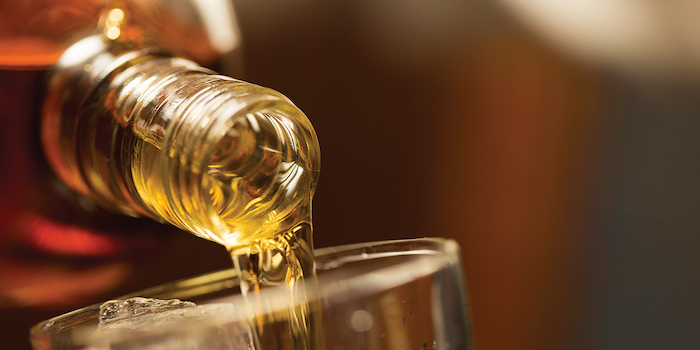Keeping up with hundreds (if not thousands) of new product releases every year is a daunting task for retailers. How can members of the trade know which products to stock, which to drop and which to keep a close eye on? This year’s list of 129 Growth Brands is a good place to start, as these wine and spirit brands have all managed to stand out in a crowded marketplace and gain consumers’ trust.
We’re proud to honor these brands in four categories: Rising Star, Fast Track, Established Growth and Comeback. Their sales increases in 2017 were integral to the overall success and continued growth of the beverage alcohol industry.
We spoke to many of this year’s winners about what made them successful, from activation programs and packaging changes to new introductions and line extensions. These wines and spirits serve as an example for newcomers to follow, and for industry veterans to emulate.
StateWays congratulates all 48 spirit and 81 wine winners, who will be honored during a reception at the Wine & Spirits Wholesalers Convention in Las Vegas on April 30.
Distilling Success
According to the Beverage Information & Insights Group, distilled spirits sales increased 2.3% in 2017 to more than 226 million nine-liter cases, continuing a growth trend for the industry that goes back more than two decades. While gin and rum sales saw another year of decline and vodka saw tepid growth, tequila and whiskey sales increased yet again.
This year’s list of Growth Brands winners includes 48 brands in four categories: Rising Stars, Fast Track Brands, Established Growth Brands and Comeback Brands. Together, they represent more than 57 million cases sold in 2017. The biggest brands on the list are Crown Royal and Tito’s, which together sold more than 10 million cases. Close behind are New Amsterdam, Jim Beam, Fireball, Svedka and Hennessy.
This year’s Supplier of the Year, Brown-Forman, had eight spirits brands on the list. More about that award, and about Juarez and Jameson joining the Hall of Fame, in the May/June issue of StateWays.
How did these winning brands achieve their sustained growth in 2017? Some utilized creative activation programs, some expanded their distribution area, some released line extensions to appeal to new consumers and some are capitalizing on current industry and consumer trends.

Whiskeys Lead the Pack
Established Growth Brand and Hall of Famer Crown Royal grew 8.5% last year, with nearly 5.8 million cases sold. The brand has expanded every year recently with new line extensions, including vanilla and the popular Regal Apple. In 2017, Crown Royal focused its advertising on charitable promotions and giving back.
“One of our most successful off-premise initiatives was the “Gift That Gives Back” promotion in support of the troops,” says Michelle Sibley, associate manager of culture and partnerships at Diageo. “The brand encouraged consumers to donate Crown Royal bags they had collected and then we, in partnership with Packages From Home, sent donations to the troops.”
Crown Royal also partnered with the NFL in 2017, running ads on television and in stadiums. That sports tie-in will continue in 2018.
“We’ll continue to lean into programming that brings to life our brand purpose and focuses on generosity,” Sibley says. “From iconic Super Bowl activations to the historic Indianapolis Motor Speedway, we want to show up at key moments in a big way.”
Three American Whiskeys from Beam Sutory won Established Growth Brands Awards this year – Jim Beam, Maker’s Mark and Knob Creek.
“We continue to enjoy the Bourbon Boom of recent years and feel bullish on the growth of the category for years to come,” says VP of Whiskey Rob Mason. “There remains strong interest in premium offerings, including LTOs, as consumers enjoy exploring the category and discovering new and unique production styles and taste profiles.”
To reach the on-premise, Jim Beam continued its partnership with baseball teams in multiple markets, engaging baseball fans at stadiums and sports bars. Jim Beam Black also worked with top barbers in a multi-city barbershop experience.
“Knob Creek continued to stand out as a bartender favorite for classic whiskey cocktails like the Old Fashioned,” Mason says. “We also expanded our partnership with Big Green EGG in 2017 for a “Whiskey & EGGs” roadshow using meat, smoke and whiskey, inviting event-goers to discover Knob Creek.”
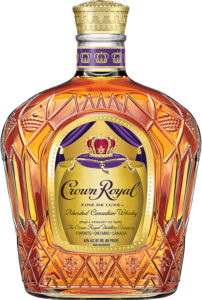 Off-Premise, Maker’s Mark bolstered its presence on shelf with the addition of locally relevant cross-merchandising displays, with partners including Rachel’s Ginger Beer in Seattle and Root 23 in Columbus.
Off-Premise, Maker’s Mark bolstered its presence on shelf with the addition of locally relevant cross-merchandising displays, with partners including Rachel’s Ginger Beer in Seattle and Root 23 in Columbus.
Fellow Bourbon Woodford Reserve was a Fast Track brand again this year, joining its line extensions Reserve Rye and Double Oaked on the list (both were Rising Stars). The brand highlighted gifting periods off-premise, including Father’s Day and Christmas, offering engraving programs, personalized labels and gifts with purchase (like a cut crystal Old Fashioned glass).
William Grant’s Monkey Shoulder used the rise of blended whisky to appeal directly to bartenders.
“More bartenders are aware of the versatility and range of blended malts and what they can offer in a cocktail,” says Brand Manager RJ Whittington. “The growth of the greater whiskey category in the U.S. is contributing to the brand’s growth as more consumers are interested in lesser-known, high-quality whisky with unique stories.”
Monkey Shoulder also recently launched its first large-scale consumer activation in the U.S. with Monkey Mixer, a giant, mobile cocktail-pouring machine (based on a cement mixer) that will travel throughout the U.S. in 2018.
Three-year old Redemption Rye from Deutsch Family Wine & Spirits grew more than 60% in 2017 and earned itself a Rising Star award. Rye’s resurgence is a logical extension of today’s cocktail culture as consumers return to vintage favorites, according to Spirits VP Susan Kilgore.
“Redemption has been successful at penetrating some of the most influential cocktail accounts in the country, and the brand’s growth is being led on-premise,” she adds. “We activated a program around Repeal Day that included a recipe contest, a podcast sponsorship on the rise and fall of Prohibition and on-premise trivia events.”
Bright Spots in Down Categories
While there were more whiskey winners than any other spirits category this year, some vodka, rum and gin brands stood out as well. They include a mix of perennial category leaders and newcomers that are reshaping the market.
Hall of Famer Svedka Vodka launched its blue raspberry flavor in 2017, which helped the brand grow 2% to 4.4 million cases. “Our new flavor was inspired by the palate of thrill seekers who crave extreme flavors, a trend seen across the food and beverage space sought after by Millennials,” says VP of Marketing Carl Evans. “Throughout 2017 we continued to highlight Svedka as a brand that combines quality vodka, flavor innovation, high-impact packaging and a distinctive personality.”
Fast Track winner Western Son Vodka, which nearly doubled its sales to 101,000 cases in 2017, is taking advantage of consumer interest in American vodka.
“Our premium Texas vodka has experienced exceptional growth as consumers look for quality and crafted products that aren’t mass-produced,” says Marketing Director Matt Krocheski. “We’re continuing to build our footprint on-premise with our signature cocktails and Western Mule programs.”
Fishbowl Brands’ Blue Chair Bay Rum was a Rising Star again this year, selling 139,000 cases and growing more than 72% in 2017.
“There’s a lot of interest right now in cream liqueurs, which was formerly dominated by one brand,” says Marketing Director Monica Gray. “We feel we’ve contributed to the innovation over the last few years in a big way. To our knowledge, we have the only line of fruit-flavored rum creams in the market and they’re doing exceptionally well.”
The Key Lime flavor was recently launched with a campaign called “Key to the Keys,” which engaged consumers through social media and using partner Kenny Chesney. “The launch of Key Lime Rum Cream increased awareness and case sales of our other flavors,” Gray adds.
Market Street Spirits’ Brinley Gold Shipwreck rum increased sales 8% last year to 27,000 cases, taking advantage of premiumization in the rum category.
“Consumers are seeking and appreciating higher-quality rums like Brinley’s Shipwreck,” says VP of Marketing Mike Wolff. “Consumers are finding their appreciation for boutique quality – especially Millennials who connect with Brinley’s authentic, award-winning rums craft with all-natural ingredients by the father-and-son team Bob and Zach Brinley.”
While most of the gin category is down, especially when it comes to off-premise sales, William Grant’s Hendrick’s grew 10% last year to more than 350,000 cases and won a Fast Track Brand award.
“There’s been a significant trend toward consumer interest in finding categories and brands that focus on flavor,” says Senior Brand Manager Darius Hines. “With our unique flavor profile featuring the essence of cucumber and rose, we created the super-premium gin category and are bringing in new consumers.” Many of those consumers are taking a bottle home to create simple and classic cocktail recipes that they sampled on-premise, he adds.
Flavored Spirits and Liqueurs Rise
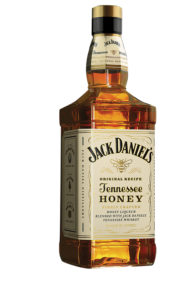 Joining brandmates Jack Daniel’s Country Cocktails and Jack Daniel’s Tennessee Rye (a Rising Star in its debut year), Jack Daniel’s Tennessee Honey is an Established Growth Brand this year, selling more than 700,000 cases.
Joining brandmates Jack Daniel’s Country Cocktails and Jack Daniel’s Tennessee Rye (a Rising Star in its debut year), Jack Daniel’s Tennessee Honey is an Established Growth Brand this year, selling more than 700,000 cases.
“The biggest news for us in 2017 was our official partnership with the NBA,” says Brand Director Casey Nelson. “We deployed a wide range of assets and tools to activate at retail – truck wraps, display programs, trade incentives and consumer activations to engage friends of Jack and fans of the NBA.”
The brand also launched a global campaign called “Friendly Introduction,” which shows how JD Tennessee Honey recruits new consumers to the Jack Daniel’s brand. Since it launched in 2011, more than 100 other flavored whiskeys have entered the now-crowded marketplace.
Sazerac’s Fireball continued its meteoric rise in 2017, growing 6.5% to nearly 4.9 million cases sold. Senior Marketing Director Rebecca Henry attributes the brand’s success to the support and dedication of its loyal fans, leading Fireball promotions to be centered around making them happy and giving them what they ask for.
Now a Campari America brand, Grand Marnier was a Comeback winner once again due to a 5.7% growth to more than 500,000 cases in 2017.
“Since the brand is 51% Cognac, we’re benefiting from a halo effect of the booming category,” says VP of Marketing Melanie Batchelor. “Secondly, we’re benefiting from the resurgence of classic cocktails. Grand Marnier has a historic place in many well-known cocktails from the Moonwalker to the Sidecar to the Margarita. We’re excited to help a new generation of bartenders discover the depth and complexity that the brand can bring to any crafted cocktail.”
In 2017, Grand Marnier’s focus was on-premise, including reconnecting with bartenders, regaining menu placements and creating bar tools for making classic cocktails.
“We also worked on improving our brand education materials and cocktail materials, which are also available on social media,” Batchelor adds. “We have a great opportunity to drive the message that Grand Marnier is 51% Cognac and 49% bitter orange liqueur, which is a unique base that delivers depth and flavor complexity to any cocktail.” BD
Sauza Drives Premium Growth
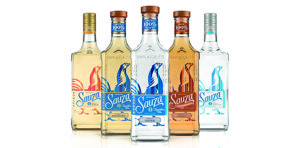 Hall of Fame brand Sauza Tequila was named an Established Growth Brand for its 717,000 cases sold and 3.2% growth over 2016. We recently spoke to Beam Suntory’s VP of Tequila and Innovation, Malini Patel, about the brand’s impressive growth streak.
Hall of Fame brand Sauza Tequila was named an Established Growth Brand for its 717,000 cases sold and 3.2% growth over 2016. We recently spoke to Beam Suntory’s VP of Tequila and Innovation, Malini Patel, about the brand’s impressive growth streak.
Stateways: What industry trends are most impacting Sauza right now?
Malini Patel: Consumers are trading up to 100% Agave tequilas like Sauza Signature Blue and experimenting with the spirit’s versatility when it comes to cocktails. The rise of communal cocktail occasions in the U.S. has also been a contributing factor as it pertains to our success. The occasions when our consumers are enjoying tequila are more often group-led, consisting of a social gathering among friends.
SW: What on- and off-premise activations most led to the brand’s success in 2017?
MP: Tequila has grown to become a preferred spirit for mixologists, so we’re seeing innovative new margarita recipes that incorporate premium spirits. In 2017, we continued to drive growth and awareness for 100 percent agave offerings, tapping into current trends. Our pitcher-style margarita recipes encouraged enjoying tequila with friends, including a retail program to celebrate Cinco de Mayo and properly kick off summer. The retail display included Sauza alongside other tequila variants and must-have cocktail cordials, offered at consumer-friendly price points and providing a one-stop shop for margarita needs.
Tito’s Growth Streak Continues
Tito’s Handmade Vodka increased its sales to nearly 5.8 million cases last year, another double-digit growth that saw the brand more than double its sales in 2015 and earned it an Established Growth Brand award. We spoke to VP of Brand Marketing Nicole Portwood about the company’s recent success.
Stateways: What industry trends are most impacting Tito’s right now?
Nicole Portwood: Digital has significantly impacted us in the past year. When Tito started the distillery, it was a person-to-person, word-of-mouth brand. Now we have a direct line to our customers 24 hours a day. It’s allowed us to connect with fans all over the world, and we think of it as word-of-mouth on a much larger scale.
E-commerce has also changed both our industry and the overall spirits market. We partner with Drizly, which brings us closer to the consumer point of purchase than ever before and allows us unprecedented access to purchasing data.
SW: What on- and off-premise promotions and activations in 2017 led to your success?
NP: We’re one of those odd brands that did it backwards – starting as an off-premise brand and building a very strong business there. We began showing up in on-premise because of a belief in our product by some amazing bartenders, and requests from our loyal fans. We’ve certainly put resources behind growing the on-premise, especially in the past few years. Our off-premise plans mirror our overall marketing strategy – connecting with fans and giving back to communities.
Vino Innovation
Wine consumption in America increased again during 2017, growing 1.3% to 345.7 million 9-liter cases. This comes after a total of 341.1 million cases in 2016, which itself represented a 2% volume growth over 2015.
That puts 2017 in line with recent growth trends. The U.S. wine category has had 1% to 3% annual growth rates dating back to 2011, when the country first began to emerge from the Great Recession.
What’s behind this recent growth? Millennials play a large part. They are an explorative group, a generation more interested in trying new flavors than adhering to one style or one brand. Look for younger LDA consumers to continue buying across different categories, countries and varietals of wine.
How do you capture their attention? Labels are as important as ever. Millennials care less about where a wine is from, and more about the eye-catching art, the brand story and the specific varietal inside.
Savvy brands like The Prisoner and 19 Crimes have increased sales with labels that stand out and invite customers to explore the stories behind the brands. This past year, 19 Crimes even used an augmented reality cell phone app to bring to life the historical criminals depicted on its labels.
In terms of wine styles in 2017, sparkling wines remained red hot, driven by rosé. The days of rosé being a woman’s drink, sipped only in warm months, are long gone. Rosé is now a year-round beverage, enjoyed by men and women alike.
This trend has trickled into prosecco, champagne and other bubblers. They have overcome old reputations as wines meant only for holidays and special events. Now, anytime of the year is appropriate to pop open some sparkling wine. No end is in sight for the bubbly boom.
Same for the rise of red blends, especially from California. These have become a go-to purchase for many U.S. consumers. People who may not know their varietals or regions can still feel safe buying a California red blend, since they are familiar with the quality and rich, fruity flavors. It’s hard to go wrong in this category, which is why it remains on the upswing.
Brands have continued to tap into social media to connect with consumers. Instagram and Snapchat campaigns are reliable ways to put brands before the eyes of consumers. Another way for savvy brands to stick out is partnerships with charitable causes. This is a win-win. Brands gain positive publicity for helping a worthwhile cause (and plenty of social-media content) while also driving attention towards a deserving charity.
Brands that connect with consumers this way will be among those who win Growth Brands Awards this year and in those to come.
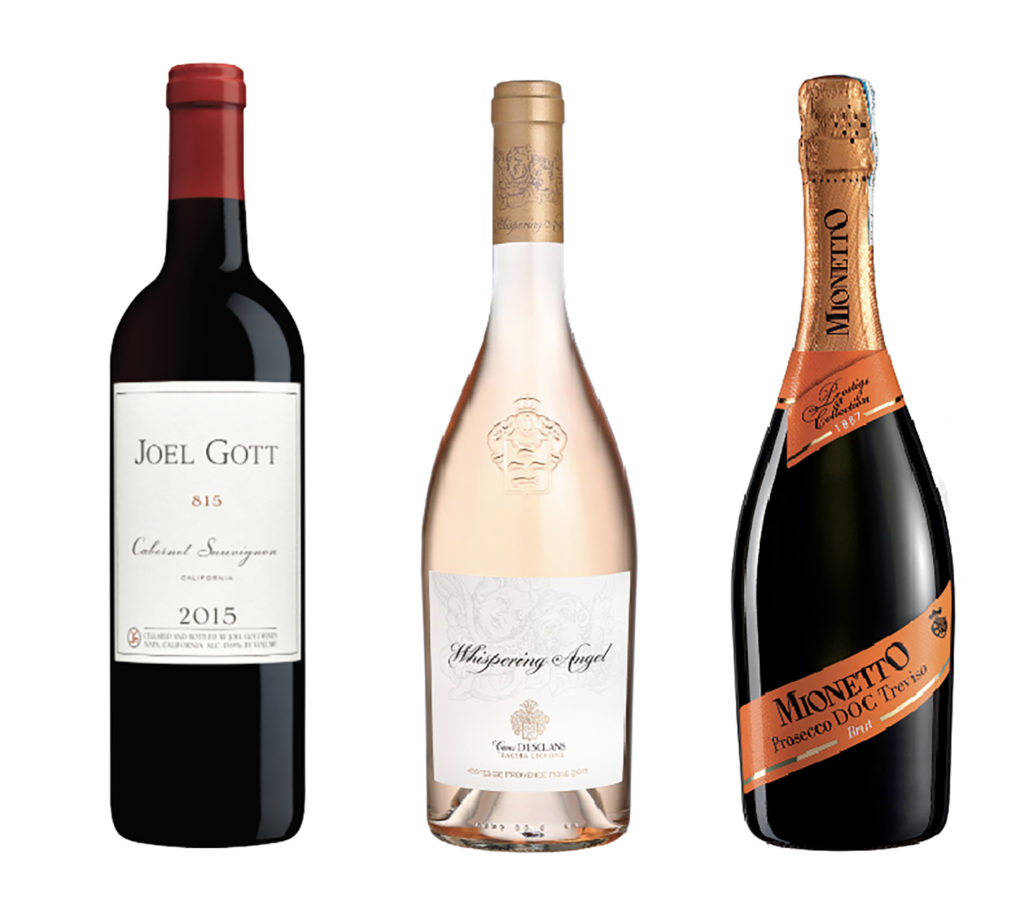
Established Brands
Many long-successful wine brands enjoyed another year of growth in 2017.
Ménage à Trois, from Trinchero Family Estates, continued its climb up the sales charts, with 2.7% growth over 2016 sales, reaching 2.9 million cases.
“Ménage à Trois has been one of the most influential retail brands in wine since essentially creating the Red Blend category with its launch in 1996,” says Dave Derby, SVP of marketing for Trinchero Family Estates. “This past year marked another successful one for the brand, with the launch of Decadence in 2017, which became the number-one new item in the 26-week period ending Jan. 27, 2018”
Derby says the brand has remained cognizant of emerging trends within the broader category of red blends. “As the category matures and further diversifies, we’ve seen some sifting within it. Similar to the Chardonnay category, today’s consumers have many choices in the various expressions of red blends – from softer, brighter styles to darker, more intense expressions. We’re seeing increasing consumer interest in softer, more elegant red blends,” he says.
Decoy from Duckhorn Wine Company grew 21.5% in 2017 to reach 587,000 cases. Again, savvy understanding of the current wine market has helped the brand remain focused on growth opportunity.
“The luxury segment has been growing and continues to grow at double digits, and Decoy’s brand growth continues to outpace the industry,” says Belinda Weber, director of digital trade and consumer marketing for Duckhorn. “There are also a number of varietals growing within the luxury segment. We are proud to be a top-five brand in eight varietal categories, including top spot in cabernet sauvignon, merlot and sauvignon blanc.”
Continued line expansion and digital marketing efforts are both in the plans.
“This year, we are integrating Calera and their tremendous Central Coast pinot noir and chardonnay into the portfolio,” Weber says. “On the digital/social side we are launching a Decoy influencer campaign this spring. We will also continue to look at new opportunities within our current brands. Last year we introduced Decoy Rosé and it was an enormous success, so will we look to continue branching out where it makes sense.”
On the Fast Track
 Brands that are rapidly on the rise are recognized with Fast Track Awards, including Meiomi from Constellation Brands. The wine line grew 11.1% in 2017, reaching 1.2 million cases. New marketing efforts played a large role.
Brands that are rapidly on the rise are recognized with Fast Track Awards, including Meiomi from Constellation Brands. The wine line grew 11.1% in 2017, reaching 1.2 million cases. New marketing efforts played a large role.
“In 2017, we launched our first national advertising campaign and continued to invest in consumer sampling through our Meiomi Home Tour of top wine and food festivals around the country,” says Ben Dollard, CMO of wine and spirits for Constellation Brands. “These investments, along with strong field execution, drove the brand’s double-digit growth in 2017.”
Meiomi’s plans for 2018 include the launch of a rosé.
Also earning a Fast Track award for Constellation Brands was Black Box. This alternatively packaged line of wines “offers a breadth of varietals in multiple convenient formats at affordable prices,” explains Jaymie Schoenberg, VP of marketing for Black Box wines.
“Alternative packaging is seeing tremendous growth,” Schoenberg adds. “Wine drinkers recognize the benefits of convenient packaging – especially on-the-go formats – and with greater awareness that quality wine can come in a box, we are seeing consumers become increasingly comfortable with this format.”
Last year Black Box solidified its consistent following with the launch of a loyalty program. Participating fans earn benefits like rewards and entries into sweepstakes. “We are one of the first wine brands to launch a loyalty program of this caliber,” Schoenberg says. “We have some very exciting, high-value rewards in the works for the coming year.”
Mionetto from Mionetto USA has increased from 499,000 cases in 2014 to 680,000 last year. Beyond tapping into the red-hot trend of sparkling wine, the brand reached consumers through multiple effective marketing campaigns in 2017, according to Mionetto USA Director of Marketing, Greg Berumen.
Mionetto’s “Bucket of Bubbles” program distributed 187-ml. bottles of its Prestige Collection, including Prosecco Treviso DOC, rosé and moscato, to encourage on-premise trial. At the retail level, “Style Your Prosecco” encouraged consumers to keep their prosecco cool with frozen juice cubes. This included cube tray VAPs, which also complemented the “Cocktail Challenge” promotion. The “Pink Cork for the Cause” program took place in September and October, in honor of Breast Cancer Awareness, while holiday-branded gift boxes wrapped up the year.
Chateau d’Esclans from Shaw Ross International Importers reached 76,000 cases in 2014, and hit 315,000 last year on the back of 57.7% growth between 2016 and 2017. The brand’s mega-hit Whispering Angel rosé is a big part of this success.
“Whispering Angel is leading the Nielsen ratings for French wine over the $20 price point,” says Paul Chevalier, Shaw-Ross national fine wine director. “From what we are seeing in summer destinations like the Hamptons or Nantucket, rosé is the new champagne. I believe that premium rosé is starting to erode the traditional sparkling wine category – especially with Millennials.”
Marketing wise, Shaw-Ross hosts or co-sponsors “over 400 events a year with Château D’Esclans in the U.S., including the largest rosé festival in the country called Pinknic,” Chevalier says. “It is our vocation to continue to educate Americans about quality rosé from Provence and carry the rosé flag in a sort of ‘town hall’ marketing strategy.”
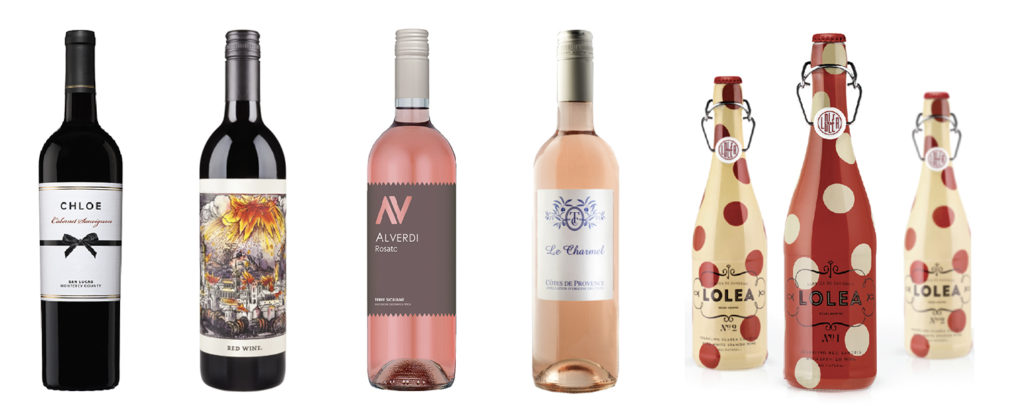
Watch the Rising Stars
Keep a lookout for these newer brands, recently launched and quickly successful.
Strawberry Sparkletini from Carriage House Imports has grown from 5,000 cases in 2014 to 125,000 in 2017. “We’ve had a lot of success with digital couponing apps like Ibotta,” says Michael Aarons, Carriage House Imports director of marketing and brand development. “We’ve had a lot of success acquiring new customers through that offering.”
“In 2018 we’re focusing on expanding our on-premise footprint, our cost-per-ounce, our resealable cork closure and having a variety of flavors,” Aarons adds. “We’re looking to capture a bigger brunch account in college communities, targeting the success of the classic mimosa.”
Chloe from The Wine Group was at 97,000 cases in 2014, and now has totaled 325,000 in 2017. Kimberly Fabbri, The Wine Group Marketing Director, points to the brand’s price-to-quality ratio.
“Chloe’s Pinot Grigio is grown in Northern Italy’s Valdadige DOC, the same sourcing as competitors that sell for twice as much on a list,” she says. “Our new Central Coast rosé continues to win in blind tastings against more expensive rosés from California and Provence.”
In terms of staying ahead of trends, The Wine Group “launched Chloe Rosé into select markets in 2016 and were well-positioned to expand nationally in 2017 as the rosé trend hit full steam,” Fabbri explains.
The Wine Group believes merlot is on the cusp of a comeback and last fall introduced Chloe Merlot. Fabbri also reports success from the brand’s partnership as a sponsor of the 2017 Tribeca Film Festival, which it will repeat in 2018.
Rabble Wine from Rabble Wine Co. has more than doubled in size since 2014, totaling 51,000 cases last year.
“We believe our brand resonates with consumers, particularly Millennials,” says Caine Thompson, president of Rabble Wine. “Our branding features provocative, edgy and engaging artwork. We’re finding this interesting interplay between tradition and innovation is evoking discussion, while drawing attention to the balance between bold and historical.”
Alverdi has grown from 49,000 to 73,000 cases since 2014. “Honest packaging and an honest product with exceptional quality has allowed Alverdi to break through,” says Michael Wolff, VP of Marketing for brand owner Opici Wines – Market St. Spirits. “Further, Alverdi’s sustainably packaged 3-liter box is also driving consumer and trade interest.”
Alverdi will release a new Rosato this spring. “We are launching dedicated trade and consumer-oriented advertising program that will continue to build throughout the year,” Wolff says. “Additional investment includes a dedicated website that will extend our social media program.”
Le Charmel is a newer brand from Winesellers Ltd that has grown from 2,000 cases in 2014 to 34,000 in 2017. “A key factor for the brand is the unique ‘French Classic’ varietals and regions the brand showcases,” says Todd Nelson, Winesellers director of marketing. “Touraine sauvignon blanc from the Loire valley, pinot noir from Pays d’Oc, a syrah-grenache grown in the Rhone Valley and the Côtes de Provence rosé.”
“The growing trends in the market show consumers are interested in valued French wines that come from small growers, unique varietals sourced from sustainable/organic farmed vineyards throughout different regions of France,” Nelson adds.
The brand Sangria Lolea, by Bodega & Company Inc, has increased volume from just 1,000 cases in 2014 to 45,000 last year.
On-premise, the brand has “found a niche at casual, chef-driven restaurants that aspire to provide their guests with a high quality, authentic product, yet need to have streamlined and efficient offerings,” explains Laura D’Ocon, communications manager.
Innovation, sampling and eye-catching branding have also driven sales off-premise.
“We invested even more heavily in sampling and demo opportunities in 2017 and it paid off with many of our retail partners telling us that Lolea demos are some of the most successful that they have ever done,” D’Ocon explains. “Our latest innovation, Lolea N5, a wine cocktail made from a tempranillo-grancha blend with a touch of hibiscus flower and ginger, capitalizes on the rosé boom.”
On the Comeback Trail
Comeback Brands this year include Black Stallion and Gnarly head, two California brands from Delicato Family Vineyards.
Black Stallion had dipped to 42,000 cases annually in 2015 before recovering and reaching 68,000 in 2017. “The Black Stallion name is well-liked by consumers and the new label communicates the winery’s unique sense of place,” says Kate McManus, Delicato Family Vineyards VP of marketing.
She also points to Black Stallion’s “distinguished track record, with six consecutive 90+ point scores on our cabernet sauvignon” as another driver for the brand’s turnaround.
Gnarly Head had been on a multi-year trend of shrinking, which ended in 2016 with 687,000 cases. In 2017, the brand reversed the trend and reached 716,000 cases. Again, help came from label updates and high ratings. “The new package is getting lots of support from consumers and retailers,” McManus says. “Gnarly Head’s wine quality continues to impress with three 90-point rated wines in 2017” •
Liberty Creek Continues Growth
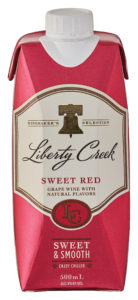
The Liberty Creek line of wines, owned by E&J Gallo Winery, enjoyed another successful 2017, increasing an impressive 12.1% in volume to achieve 4.415 million 9-liter cases. This continued pattern of growth earned Liberty Creek an Established Growth Brand Award. We caught up with Alex Lee, director of marketing for E&J Gallo Winery’s Popular Business Unit, to talk about the brand’s achievements.
Stateways: What industry trends are impacting the brand?
Alex Lee: An ongoing trend in the wine industry is that consumers continue to seek great-tasting wines at an affordable price. Liberty Creek offers an excellent value with our 1.5-L wine. In addition, we know our consumers are seeking portability when looking for their favorite wines. This is why Liberty Creek began offering portable packs of wine in our 500-ml. tetra. With its small and convenient size, Tetra is allowing our consumers to enjoy wine in any occasion, especially where glass is not preferred.
SW: What off-premise promotions and activations in 2017 led to your success?
AL: Liberty Creek is a proud national partner of Homes for Our Troops, and I believe our partnership with this remarkable organization was important in 2017. This group builds mortgage-free, specially adapted homes across the U.S. for severely injured veterans. We leverage this partnership in-store with displays to increase awareness of our brand and promote the group’s mission.
SW: What is your 2018 marketing plan to continue growing sales?
AL: Liberty Creek’s new campaign, Proudly Serving America, is driving awareness to our brand and our special mission to support and serve all Americans. It’s also bringing more attention to our incredible partnership with Homes for Our Troops. Our brand honors the pursuit of happiness with an American-grown wine in every glass, and we feel this campaign is essential in reinforcing this idea.
SW: What does it mean to be a Growth Brands winner?
AL: It’s noteworthy that 2018 is our 10-year anniversary since our launch in the retail space, so to be recognized for our continued achievements, success and growth is a wonderful honor and a testament to the quality of wine Liberty Creek offers.

